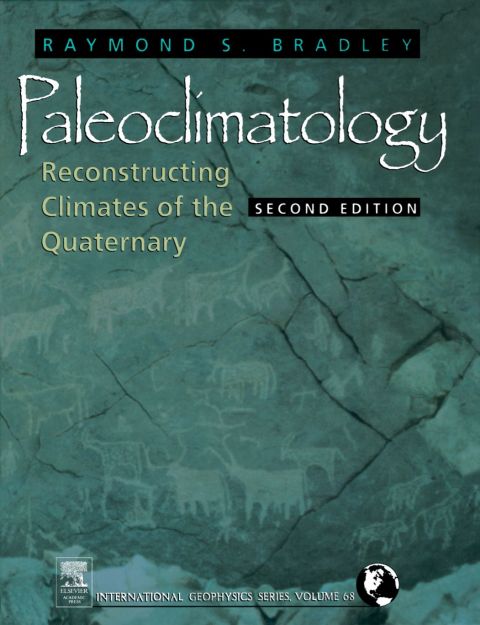Description
Efnisyfirlit
- CONTENTS
- PREFACE
- ACKNOWLEDGMENTS
- Chapter 1. Paleoclimatic Reconstruction
- 1.1 Introduction
- 1.2 Sources of Paleoclimatic Information
- 1.3 Levels of Paleoclimatic Analysis
- 1.4 Modeling in Paleoclimatic Research
- Chapter 2. Climate and Climatic Variation
- 2.1 The Nature of Climate and Climatic Variation
- 2.2 The Climate System
- 2.3 Feedback Mechanisms
- 2.4 Energy Balance of the Earth and its Atmosphere
- 2.5 Timescales of Climatic Variation
- 2.6 Variations of the Earth’s Orbital Parameters
- Chapter 3. Dating Methods I
- 3.1 Introduction and Overview
- 3.2 Radioisotopic Methods
- Chapter 4. Dating Methods II
- 4.1 Paleomagnetism
- 4.2 Dating Methods Involving Chemical Changes
- 4.3 Biological Dating Methods
- Chapter 5. Ice Cores
- 5.1 Introduction
- 5.2 Stable Isotope Analysis
- 5.3 Dating Ice Cores
- 5.4 Paleoclimatic Reconstruction from Ice Cores
- Chapter 6. Marine Sediments and Corals
- 6.1 Introduction
- 6.2 Paleoclimatic Information from Biological Material in Ocean Cores
- 6.3 Oxygen Isotope Studies of Calcareous Marine Fauna
- 6.4 Relative Abundance Studies
- 6.5 Paleotemperature Records from Alkenones
- 6.6 Dissolution of Deep-sea Carbonates
- 6.7 Paleoclimatic Information from Inorganic Material in Ocean Cores
- 6.8 Coral Records of Past Climate
- 6.9 Thermohaline Circulation of the Oceans
- 6.10 Ocean Circulation Changes and Climate over the Last Glacial-Interglacial Cycle
- 6.11 Changes in Atmospheric Carbon Dioxide: the Role of the Oceans
- 6.12 Orbital Forcing: Evidence from the Marine Record
- Chapter 7. Non-marine Geological Evidence
- 7.1 Introduction
- 7.2 Loess
- 7.3 Periglacial Features
- 7.4 Snowlines and Glaciation Thresholds
- 7.5 Mountain Glacier Fluctuations
- 7.6 Lake-level Fluctuations
- 7.7 Lake Sediments
- 7.8 Speleothems
- Chapter 8. Non-marine Biological Evidence
- 8.1 Introduction
- 8.2 Former Vegetation Distribution from Plant Macrofossils
- 8.3 Insects
- Chapter 9. Pollen Analysis
- 9.1 Introduction
- 9.2 The Basis of Pollen Analysis
- 9.3 How Rapidly Does Vegetation Respond to Changes in Climate?
- 9.4 Pollen Analysis of a Site: the Pollen Diagram
- 9.5 Mapping Vegetation Change: Isopolls and Isochrones
- 9.6 Quantitative Paleoclimatic Reconstructions Based on Pollen Analysis
- 9.7 Paleoclimatic Reconstruction from Long Quaternary Pollen Records
- Chapter 10. Dendroclimatology
- 10.1 Introduction
- 10.2 Fundamentals of Dendroclimatology
- 10.3 Dendroclimatic Reconstructions
- 10.4 Isotope Dendroclimatology
- Chapter 11. Documentary Data
- 11.1 Introduction
- 11.2 Historical Records and Their Interpretation
- 11.3 Regional Studies Based on Historical Records
- 11.4 Records of Climate Forcing Factors
- Chapter 12. Paleoclimate Models
- 12.1 Introduction
- 12.2 Types of Models
- 12.3 Sensitivity Experiments Using General Circulation Models
- 12.4 Model Simulations: 18 KA B.P. to the Present
- 12.5 Coupled Ocean-atmosphere Model Experiments
- 12.6 General Circulation Model Paleoclimate Simulations and the Paleorecord
- APPENDIX A. FURTHER CONSIDERATIONS ON RADIOCARBON DATING
- A.l Calculation of Radiocarbon Age and Standardization Procedure
- A.2 Fractionation Effects
- APPENDIX B. WORLDWIDE WEB-BASED RESOURCES IN PALEOCUMATOLOGY
- REFERENCES
- INDEX






Reviews
There are no reviews yet.